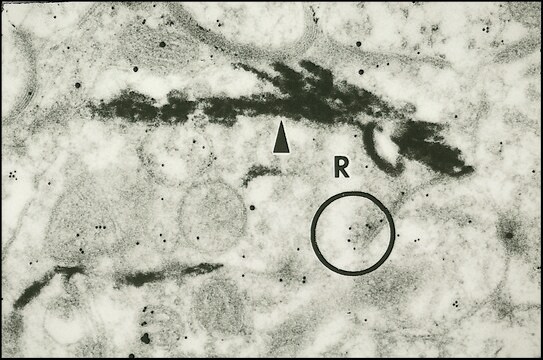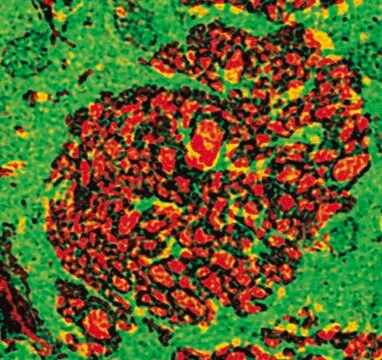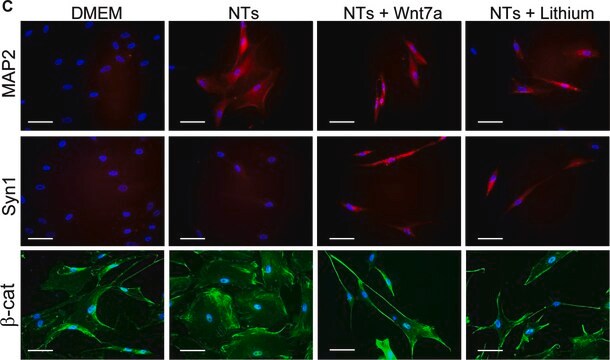G9282
Monoclonal Anti-Glutamate antibody produced in mouse
clone GLU-4, ascites fluid
About This Item
Empfohlene Produkte
Biologische Quelle
mouse
Konjugat
unconjugated
Antikörperform
ascites fluid
Antikörper-Produkttyp
primary antibodies
Klon
GLU-4, monoclonal
Enthält
15 mM sodium azide
Speziesreaktivität
wide range
Methode(n)
indirect ELISA: 1:10,000 using in situ prepared L-glutamate-glutaraldehyde-BSA conjugate for coating
Isotyp
IgG1
Versandbedingung
dry ice
Lagertemp.
−20°C
Posttranslationale Modifikation Target
unmodified
Angaben zum Gen
human ... GRM1(2911)
Spezifität
Immunogen
Anwendung
Immuno-electron microscopy (1 paper)
- immunolabeling of glutamate in the lamina of the Drosophila visual system
- immunocytochemistry at a working dilution of 1:20,000 to detect glutamate using heart and extrinsic nerves of stomatopod crustacean, Squilla oratoria
- immunofluorescent staining as a primary antibody at a working dilution of 1:1000 using cryosections of brains and embryos from mice
- use as a primary antibody to measure the glutamate release in synaptosome preparations
Biochem./physiol. Wirkung
Haftungsausschluss
Sie haben nicht das passende Produkt gefunden?
Probieren Sie unser Produkt-Auswahlhilfe. aus.
Lagerklassenschlüssel
10 - Combustible liquids
WGK
WGK 3
Flammpunkt (°F)
Not applicable
Flammpunkt (°C)
Not applicable
Analysenzertifikate (COA)
Suchen Sie nach Analysenzertifikate (COA), indem Sie die Lot-/Chargennummer des Produkts eingeben. Lot- und Chargennummern sind auf dem Produktetikett hinter den Wörtern ‘Lot’ oder ‘Batch’ (Lot oder Charge) zu finden.
Besitzen Sie dieses Produkt bereits?
In der Dokumentenbibliothek finden Sie die Dokumentation zu den Produkten, die Sie kürzlich erworben haben.
Unser Team von Wissenschaftlern verfügt über Erfahrung in allen Forschungsbereichen einschließlich Life Science, Materialwissenschaften, chemischer Synthese, Chromatographie, Analytik und vielen mehr..
Setzen Sie sich mit dem technischen Dienst in Verbindung.







